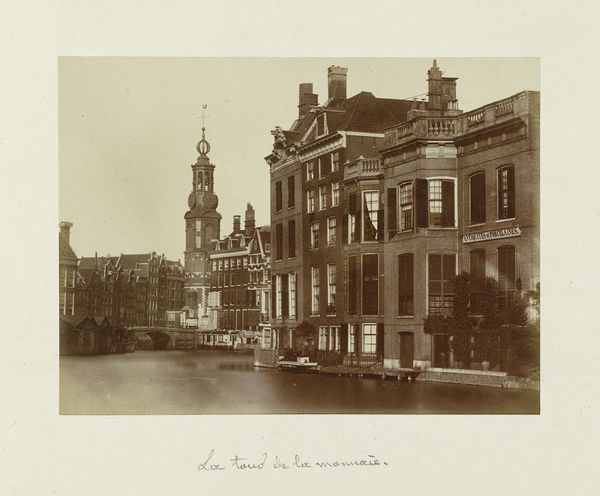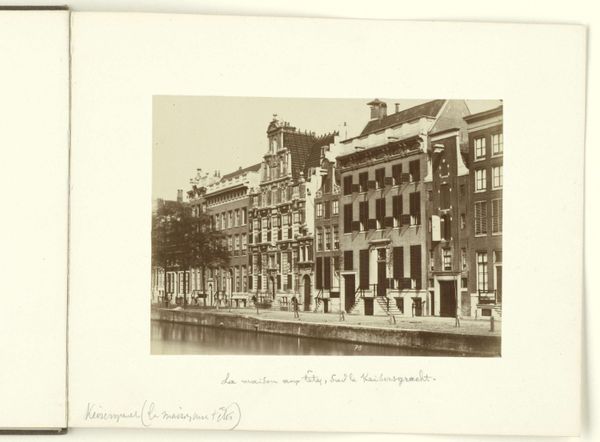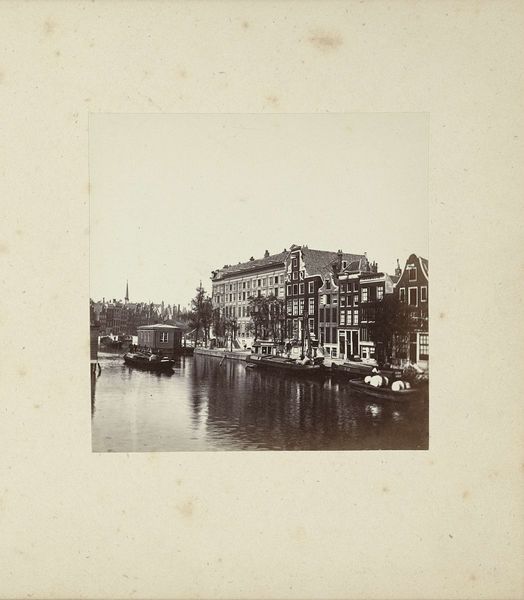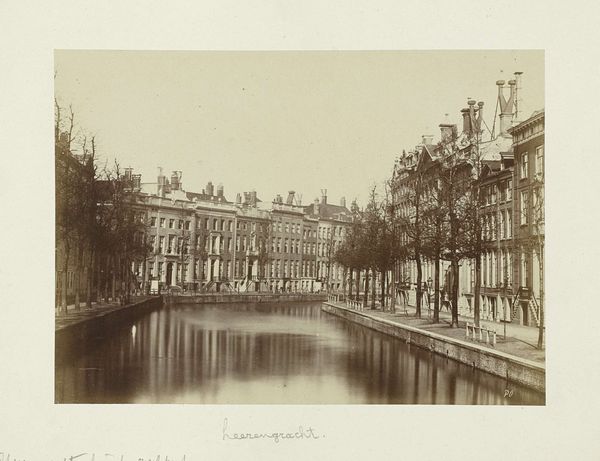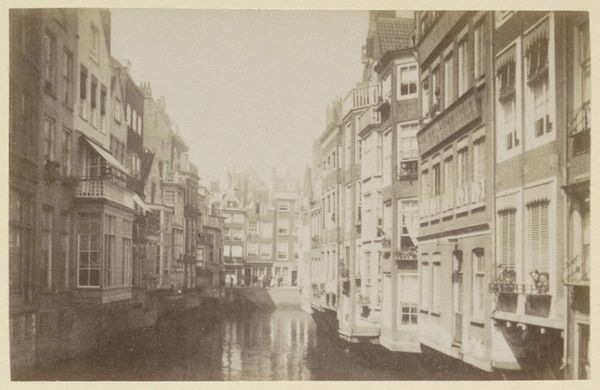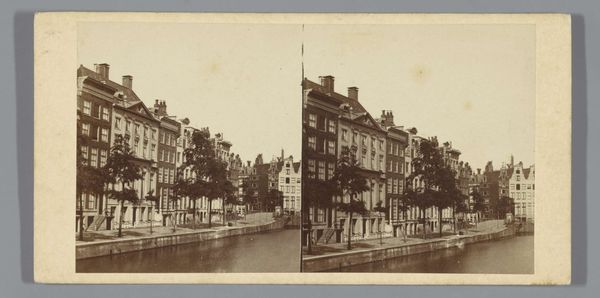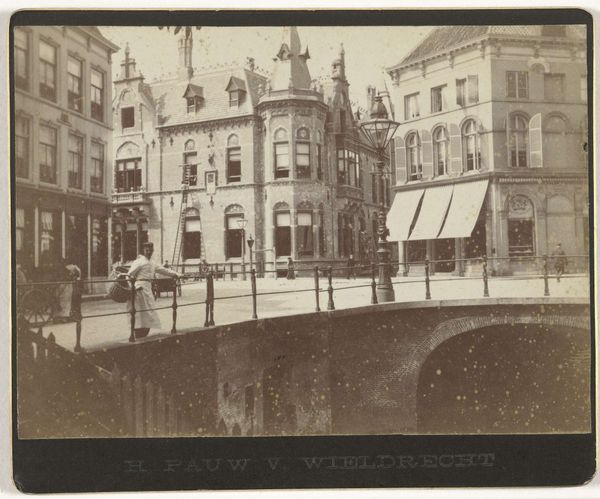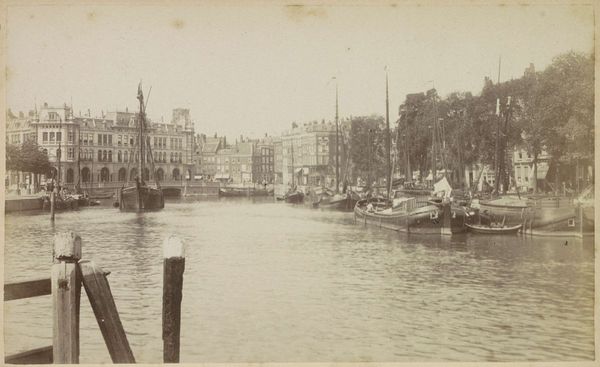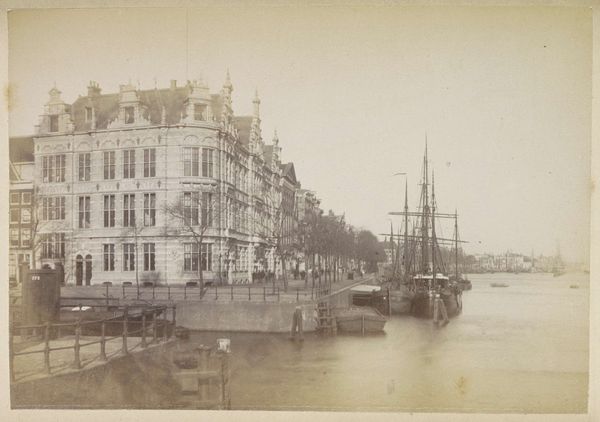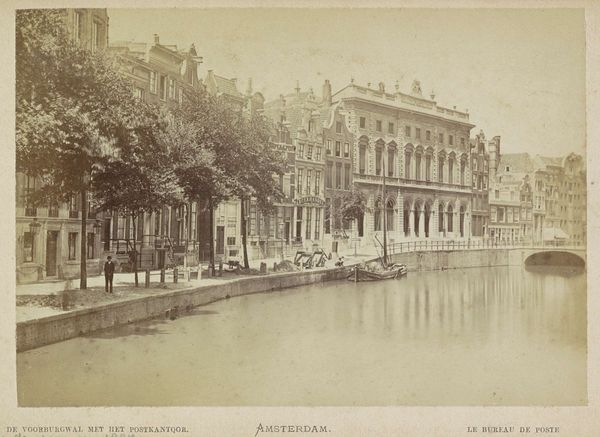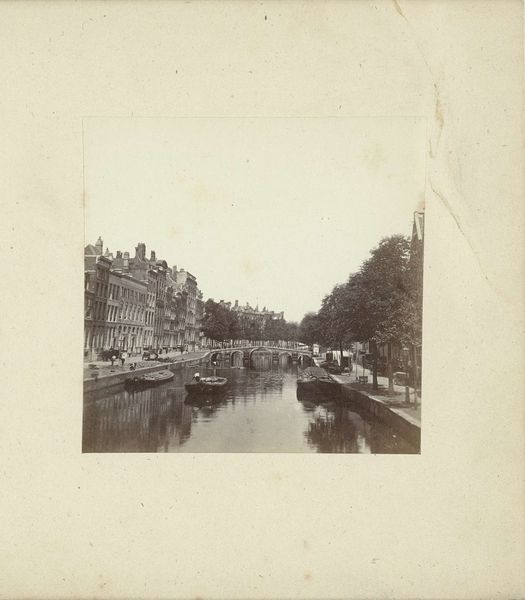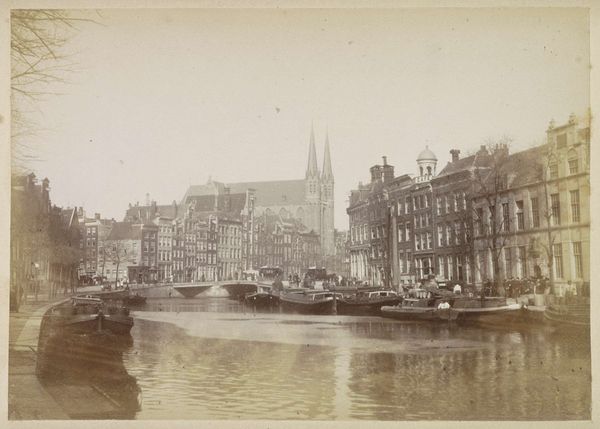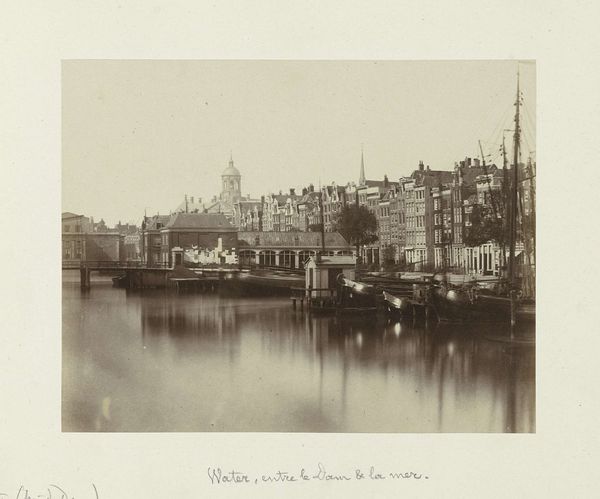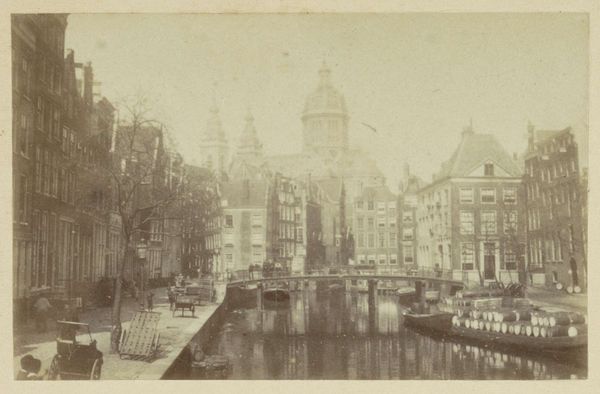
Felix Meritis aan de Keizersgracht, in de verte de Westerkerk before 1860
0:00
0:00
photography
#
dutch-golden-age
#
landscape
#
photography
#
cityscape
#
realism
Dimensions: height 125 mm, width 160 mm
Copyright: Rijks Museum: Open Domain
Pieter Oosterhuis created this albumen print photograph of Felix Meritis on the Keizersgracht. Photography in this period was a craft as much as a science. The albumen printing process, popular in the 19th century, involved coating paper with a solution of egg white and silver nitrate, making it sensitive to light. Placing a negative on this prepared paper and exposing it to sunlight resulted in a detailed, sepia-toned image, as seen here. This painstaking process reflects the labour-intensive nature of early photography. The tonal range visible in the print, from the dark reflections in the canal to the highlights on the building facades, are a direct result of the way light interacts with the sensitized paper. The very materiality of this photograph – the specific combination of paper, chemicals, and light – dictates its aesthetic qualities. Consider the amount of work involved, from preparing the photographic materials to capturing the image and developing the print. Understanding these processes enriches our appreciation of the photograph, highlighting photography's status as both a technological marvel and a form of skilled craftsmanship.
Comments
No comments
Be the first to comment and join the conversation on the ultimate creative platform.
